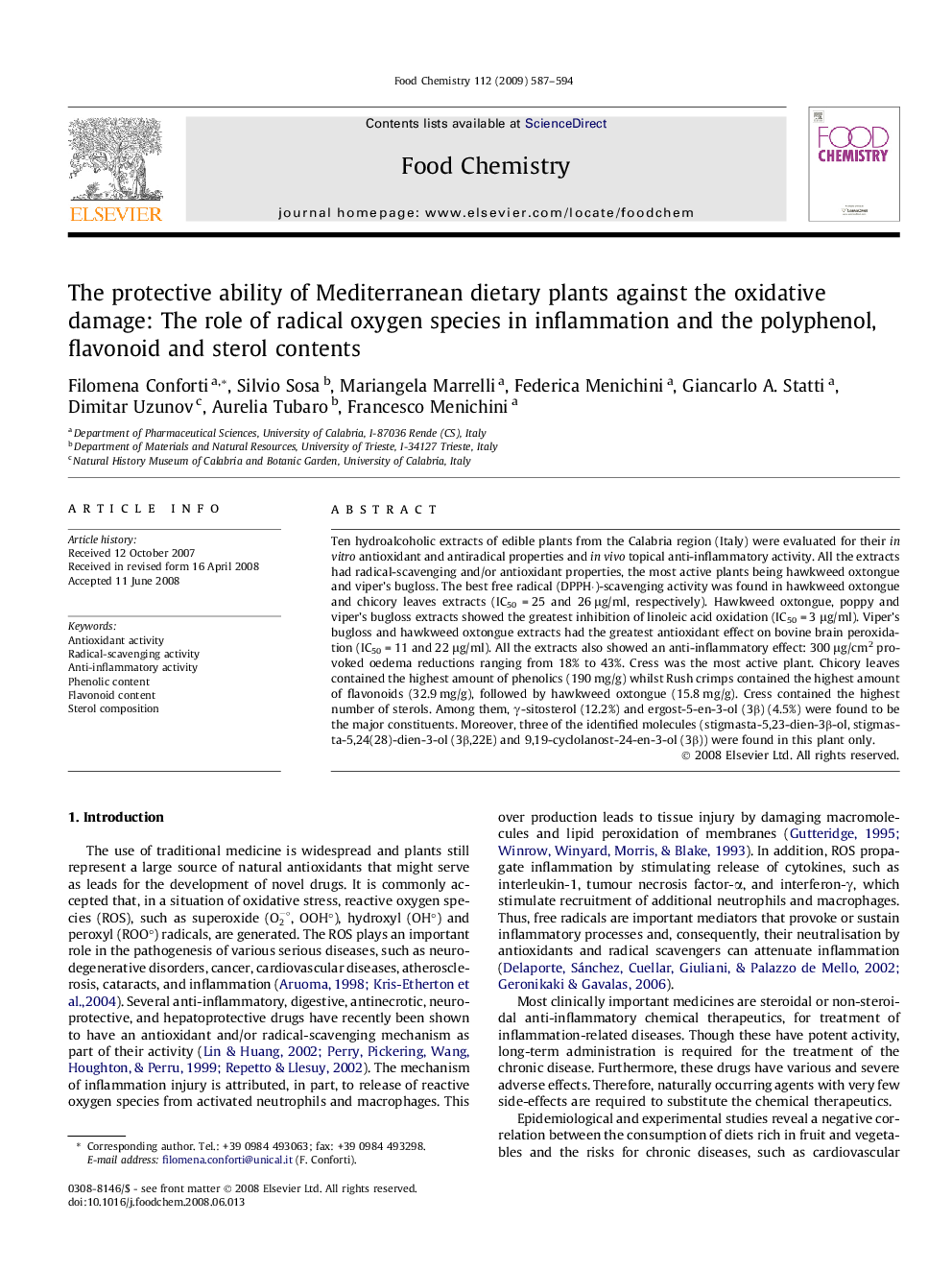| Article ID | Journal | Published Year | Pages | File Type |
|---|---|---|---|---|
| 1189183 | Food Chemistry | 2009 | 8 Pages |
Ten hydroalcoholic extracts of edible plants from the Calabria region (Italy) were evaluated for their in vitro antioxidant and antiradical properties and in vivo topical anti-inflammatory activity. All the extracts had radical-scavenging and/or antioxidant properties, the most active plants being hawkweed oxtongue and viper’s bugloss. The best free radical (DPPH·)-scavenging activity was found in hawkweed oxtongue and chicory leaves extracts (IC50 = 25 and 26 μg/ml, respectively). Hawkweed oxtongue, poppy and viper’s bugloss extracts showed the greatest inhibition of linoleic acid oxidation (IC50 = 3 μg/ml). Viper’s bugloss and hawkweed oxtongue extracts had the greatest antioxidant effect on bovine brain peroxidation (IC50 = 11 and 22 μg/ml). All the extracts also showed an anti-inflammatory effect: 300 μg/cm2 provoked oedema reductions ranging from 18% to 43%. Cress was the most active plant. Chicory leaves contained the highest amount of phenolics (190 mg/g) whilst Rush crimps contained the highest amount of flavonoids (32.9 mg/g), followed by hawkweed oxtongue (15.8 mg/g). Cress contained the highest number of sterols. Among them, γ-sitosterol (12.2%) and ergost-5-en-3-ol (3β) (4.5%) were found to be the major constituents. Moreover, three of the identified molecules (stigmasta-5,23-dien-3β-ol, stigmasta-5,24(28)-dien-3-ol (3β,22E) and 9,19-cyclolanost-24-en-3-ol (3β)) were found in this plant only.
